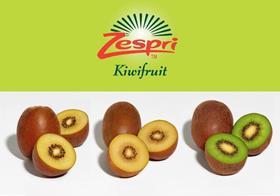
New Zealand growers have shown clear preferences among kiwifruit marketer Zespri’s new varieties, according to today’s allocation of grower licences for the cultivars.
Zespri announced the licence allocations this morning New Zealand time for the one new green and two new gold cultivarsit released last month.
Both new gold varieties were oversubscribed in applications for licences, Zespri’s Melanie Palmer told Fruitnet.com, but the marketer’s sweet early green kiwifruit did not attract as many applications as anticipated.
For Gold3, Zespri’s new early gold cultivar, 244 bids for a total of 509ha were received. Gold9, its new long-storing gold, received 481 bids for 970ha. New sweet green kiwifruit Green 14, however, received only 72 bids for 104ha.
Because of the large interest in the late-storing Gold9 variety, Zespri’s Evaluation Panel will allocate licences for an extra 50ha for the variety this year.
“Our market demand forecast supports the release of 200ha of each variety, and in some cases it was stronger,” said Zespri CEO Lain Jager.
“The Evaluation Panel advised Zespri of the oversubscription for Gold9, and we decided to increase available hectares to 250ha. We believe this is manageable from a market perspective, and enables all interested growers to participate in this year’s commercial release.”
All applicants for Gold9 received a licence for no more than 0.5ha of the variety, while some applications for Gold3 licences received slightly over half a hectare. Growers will be able to collect their planting material from this week.
Allocation figures for Green14 are likely to increase over the next few weeks as Zespri contacts bidders to offer further licences.
“We’ll be going through that process now, and we expect that the final licences will come in higher than 104ha, but it’s not clear at the moment by how much,” explained Ms Palmer.
The difference in demand between the new cultivars will not be surprising to some. In an interview with Fruitnet.com in April, New Zealand Kiwifruit Growers Inc (NZKGI) president Peter Ombler predicted such a discrepancy.
“I think the way growers will perceive it will be that the new gold cultivars are likely to be a lower risk option to change to, and so naturally that would lead you to believe initially there would be a stronger uptake of those cultivars,” he said.
“But the lower risk one isn’t always the highest returning one either, and perhaps the new sweet green could be the one that has the highest risk and the highest return.”
Zespri has described this year’s release of licences as “conservative”, a stance the company will take while the New Zealand industry tackles the steep learning curve that accompanies any new kiwifruit variety.
“Zespri will progressively release licences over the coming years to match demand as the varieties perform in the market, through the supply chain and on the orchard,” said Mr Jager.



